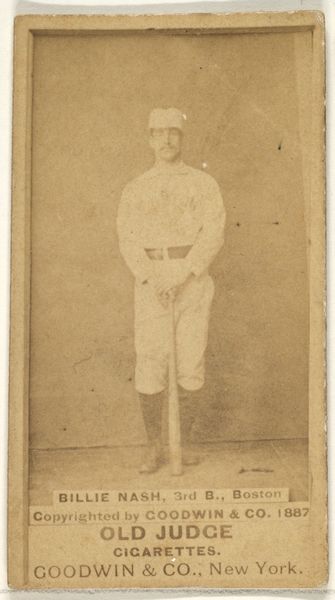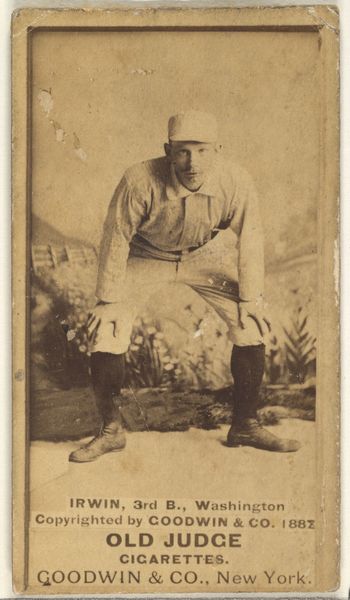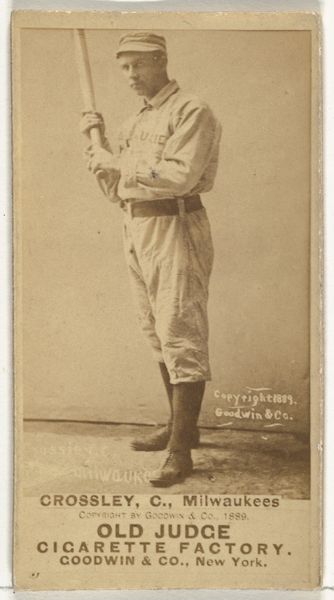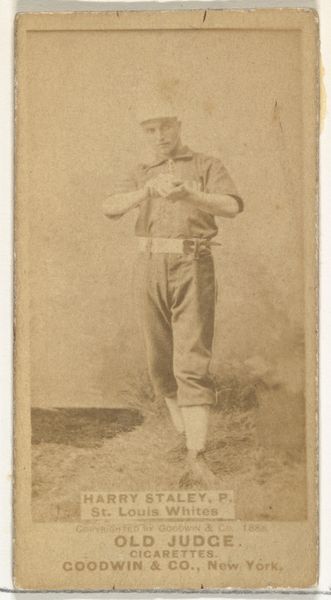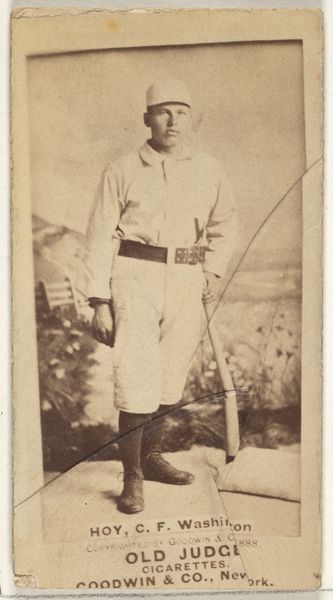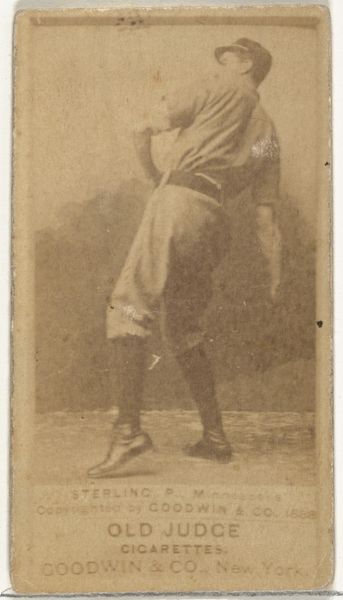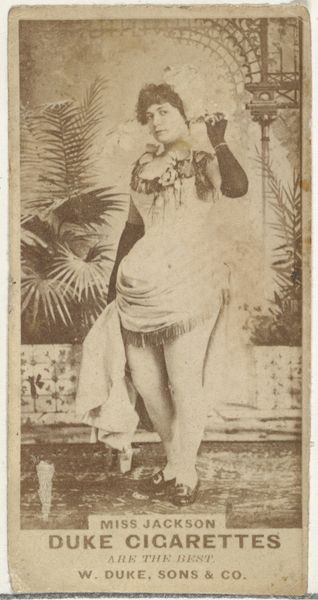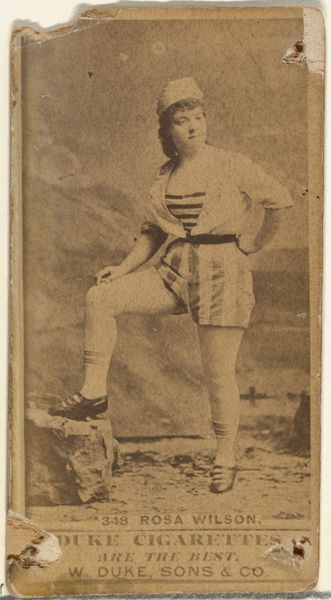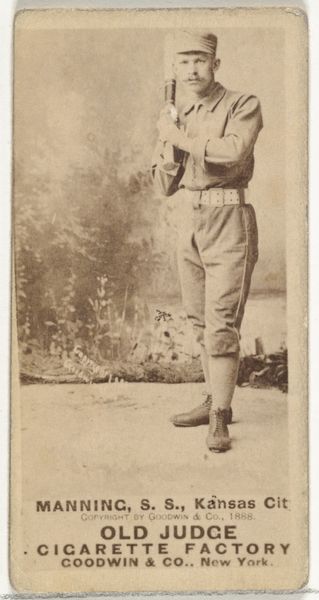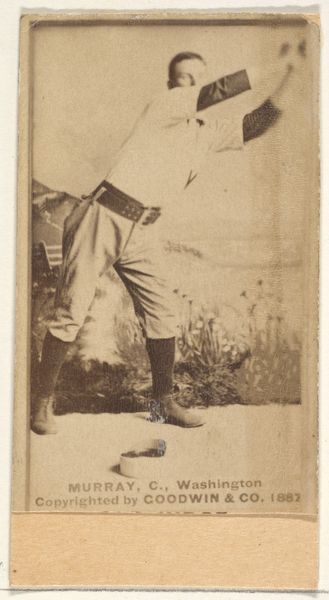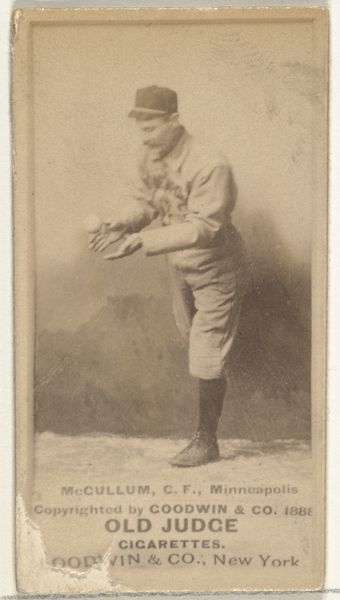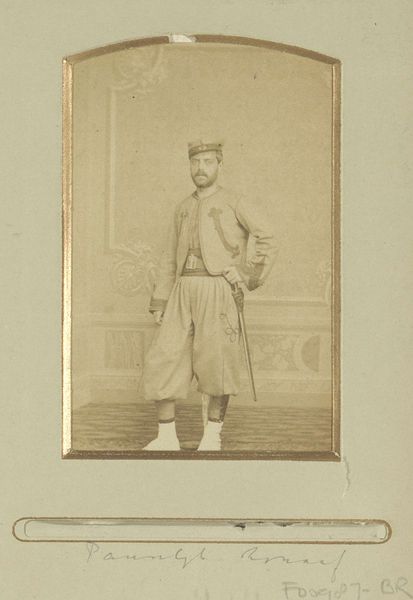
Lillian Elmore, from the Actors and Actresses series (N171) for Old Judge Cigarettes 1886 - 1890
0:00
0:00
drawing, print, photography
#
portrait
#
drawing
# print
#
figuration
#
photography
#
realism
Dimensions: sheet: 2 11/16 x 1 3/8 in. (6.9 x 3.5 cm)
Copyright: Public Domain
Curator: Here we have a promotional trading card from Goodwin & Company's "Old Judge Cigarettes" series, dating from around 1886 to 1890. It features a photographic portrait of Lillian Elmore, who I assume was an actress. Editor: There's something haunting about this image. The sepia tone gives it a sense of distance, as though peering through a time capsule. She looks almost ghostly, posed against what seems to be a painted backdrop, rather than a real place. Curator: Exactly! These cards were mass-produced using albumen prints, glued onto card stock, essentially blurring the lines between photography, printmaking and commodity. Think about the labor involved – from the photographers and printers to the factory workers assembling these tiny objects. Each card would have passed through multiple hands. Editor: And its primary function was marketing. It is amazing to think of art being circulated in this way. It shifts the focus to consumption, doesn't it? Here’s a beautiful portrait, being given away to promote the sales of cigarettes. These cards were aimed at male consumers, offering them a collectible glimpse into the glamorous world of theater. Do we know much about the career of Lillian Elmore? Curator: Less than we should, I imagine. The purpose here wasn't really to immortalize her acting, but to provide an attractive image connected to a brand. That backdrop, hinting at an exotic locale, would certainly have aided the appeal, contributing to a narrative of the luxurious lifestyle made available, metaphorically at least, with every purchase of "Old Judge Cigarettes". Editor: It is remarkable to think about the legacy of images such as this, particularly when encountered outside their original context, removed from the market, exhibited in museums and cultural centers. Does elevating commercial images to museum pieces change our perceptions of production, class and value, challenging us to reflect upon the ever shifting power structures within society? Curator: I think so, it requires us to recognize the value inherent in craftsmanship, whether that be associated to "High" or "Low" art. By valuing labor we allow the invisible workers in the factories and farms to have their contributions recognized. It seems to invite that recognition. Editor: Indeed, and viewing it now, removed from the tobacco counter and encased in glass, forces a confrontation with those historical marketing tactics and the societal attitudes they reflected and perpetuated. A humble advertisement card transforming into a historical artifact, pregnant with a complexity and depth its original manufacturers likely never considered.
Comments
No comments
Be the first to comment and join the conversation on the ultimate creative platform.

